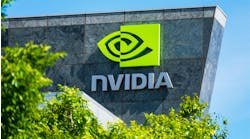Seven Drivers for Performance-Driven Engagement
Employee engagement is the most fashionable human resources concept. In theory, engaged employees are harder working, more loyal, even more passionate about their jobs than others. A 2011 Society for Human Resource Management survey found that 69% of HR professionals believed engagement is the most important HR challenge.
Every major HR consulting firm has an engagement offering and presents studies showing the importance of engagement and the superiority of its own metric. For example, a 2008 Gallup Consulting study claimed that disengaged employees cost the U.S. economy over $300 billion in lost productivity, and that organizations in the top quartile on its engagement measure showed 18% greater productivity, 12% greater profitability, 27% less absenteeism, 51% less turnover, and 62% fewer safety incidents than organizations in the bottom quartile.
Should we be skeptical?
Despite the hard sell, engagement is not something truly new and different. Engagement overlaps conceptually and empirically with older measures of job satisfaction, morale, job involvement, and organization commitment. For example, Gallup researchers reported in 2002 that the correlation between job satisfaction and Gallups 12-item engagement measure was a whopping .91, indicating that these measures are essentially interchangeable.
Employees responding to surveys simply do not make fine distinctions between abstract concepts. As a result, engagement measures are nothing new.
Engagement studies also have a causality problem. Nearly all engagement studies are correlational, assuming that because high-performing companies have high engagement scores, increasing engagement scores will lead to increased performance. However, reverse causality is more plausible. That is, employees may have higher engagement scores because their employer is more successful.
Apple, RIM Provide an Example
Consider iPhone maker Apple and Blackberry maker Research In Motion. We hardly need surveys to know that Apple employees have higher morale because they have been on an astounding winning streak, while RIM employees are concerned about the future of their company. Job security, pay, promotion opportunities, and the good feelings that come from working for a winner lead to higher engagement at Apple. Making RIM employees happier wont turn the company around, but increasing its performance almost certainly would improve engagement.
The engagement literature mostly ignores decades of employee motivation research. This research indicates that employees perform more effectively when they see a connection between performance and higher rewards (pay, promotions, feelings of accomplishment, etc.). In turn, engagement increases from receiving these rewards. Rewards that are not linked to performance may lead to higher engagement and decreased turnover but are unlikely to yield higher performance.
In short, performance increases when we help employees find ways to perform better and, in doing so, earn rewards that they value.
The seven primary levers for performance-driven engagement are work design, training and development, pay (especially incentives), benefits, feelings of affiliation with peers and the company, performance management, and selection systems. Decades of research show that all can increase performance and engagement. However, a solid engagement strategy requires choices; no firm can tolerate or afford changes in all levers at once.
The best strategy brings competitive advantage. This means that it is cost-effective, different and hard to imitate. That is the opposite of contemporary HR dogma, which opts for the safety of mythical best practices that everyone else is using. The best practices for a given company are those that are best aligned with its unique business, organizational structure, technology, and culture. Discovering these practices takes careful analysis and experimentation.
In general, the greatest opportunities lie in performance management (the most hated lever, but a powerful one) and compensation. Cash incentives offer the most direct way of increasing performance and engagement simultaneously, but are severely underused. The average company devotes about 20 times as many dollars to benefits, which are mostly unrelated to performance, as to cash incentives, which reward performance directly. The growth in work-life benefits, the only really new engagement technique in the past 20 years, has not helped.
A solid engagement strategy can pay off for both employees and employers, improving morale while increasing performance. However, a poor strategy simply wastes resources.
Gerald Ledford, Ph.D., is president of Ledford Consulting Network, Redondo Beach, Calif., and an authority on human capital issues, including employee reward systems. From 1998 to 2003, he was a leader at Sibson Consulting. From 1982 to 1998, Ledford was a key contributor at the Center for Effective Organizations, University of Southern California. He received a Ph.D. and M.A. in psychology from the University of Michigan. Gerry has authored over 100 articles and 10 books. He can be reached at [email protected].
See Also:




